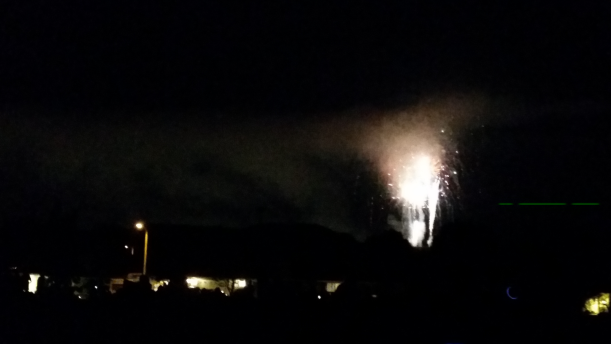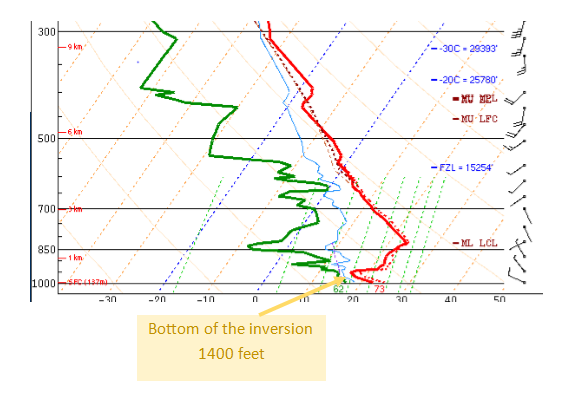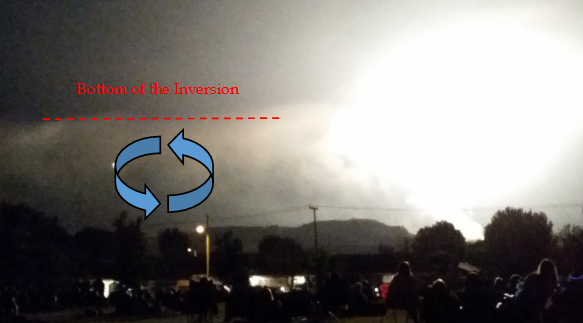By Meteorologist Kerry Anderson
Happy 4th of July everyone. I am sure most of you spent the evening celebrating by watching a fireworks display. This is what I saw this evening near my home here in Southern California. After about 15 minutes people started complaining because they could no longer see the fireworks through the smoke and I heard my fellow spectators wishing that the wind would blow and push the smoke away so we could have a clear view. What they didn’t know is that light winds were not the major reason why the smoke became so dense. I could see the tell tale signs of a fairly shallow inversion layer. In fact I wasn’t forecasting today so I had not looked at the maps but as I looked at the flat top to the smoke I mentioned that the bottom of the inversion was sitting at about 1300 feet. (Please note that if this is not information you want to know during a fireworks display do not sit next to a meteorologist 🙂 )
When I got home I took a look at the latest sounding and The National Weather Service was reporting that the bottom of the inversion was sitting around 1400 feet. You hear us talk alot about the height of the inversion for our wind forecasts. We watch this closely to determine the height and depth of the marine layer clouds. An inversion is a layer in the atmosphere where the air temperature increases with height. The air below this layer is trapped and so as we saw with the fireworks display tonight the smoke can’t continue to rise and mix out with the air above. Inversions are an almost constant occurrence in Southern California in the summertime as we sit just to the east of the Pacific Subtropical High Pressure and so we have very stable air that is forced to sink toward the surface. This helps to warm it. Beneath this air lies the chilly waters of the Pacific Ocean that cools the surface air.
This picture shows that inversion layer quite clearly. The inversion acts as a lid so the smoke can only rise a short distance and then mixes through a shallow depth becoming very thick and concentrated. Another interesting characteristic with an inversion is that sound will also bounce off the layer and will be more concentrated. Tonight we could hear the sound from the fireworks shows nearby reverberating through this shallow layer. In fact the first observation I make in the morning is to listen to the local freeway sounds. When the inversion is close to the ground it sounds like the trucks are heading into my bedroom.
So next year for optimal fireworks viewing make sure to check the latest sounding or follow us hear at WindAlert and we’ll make sure we you know just what the air currents are doing.



